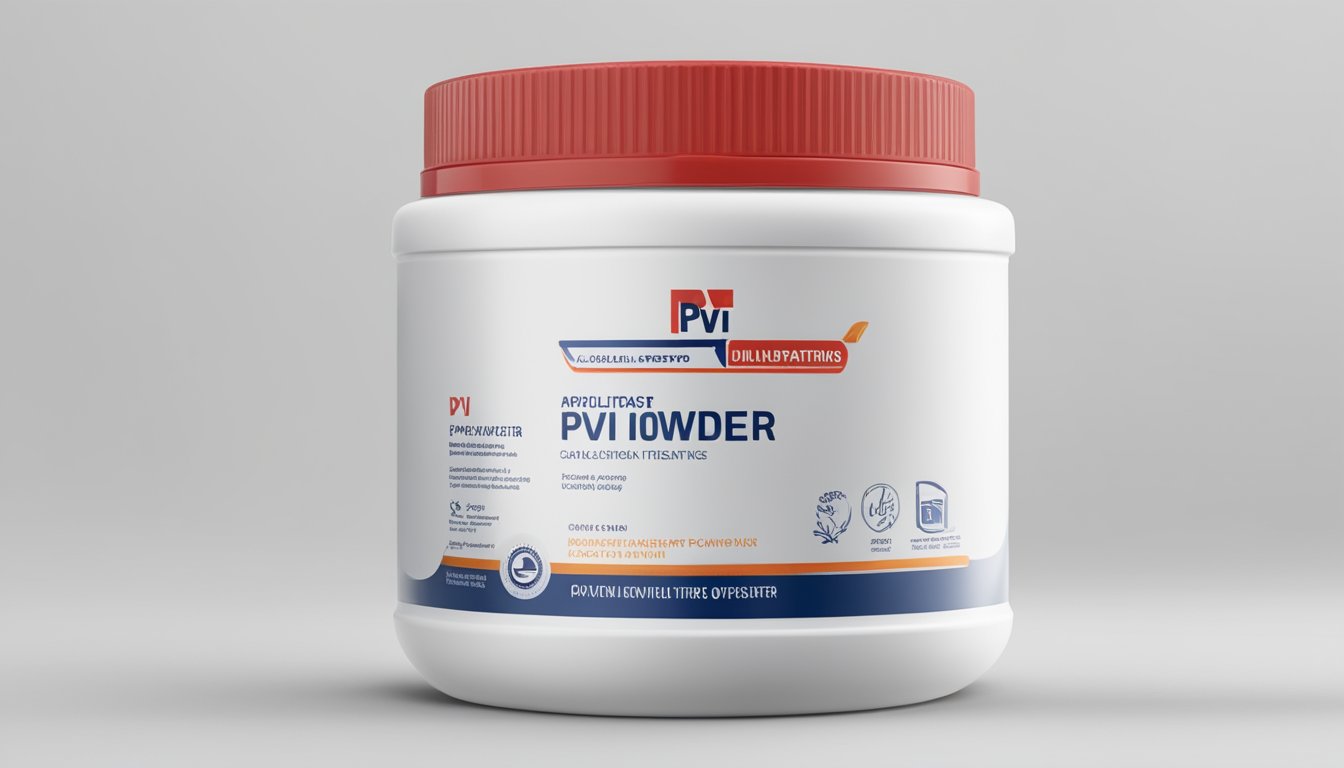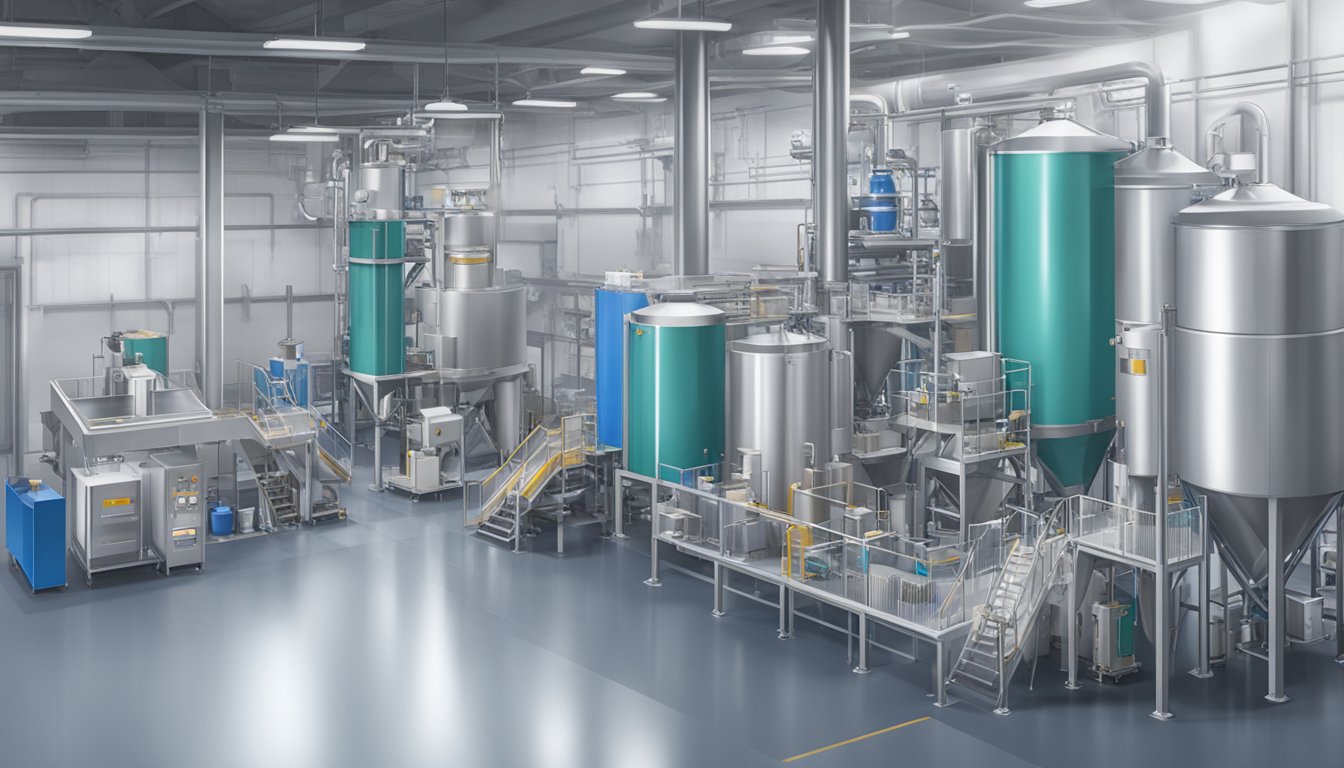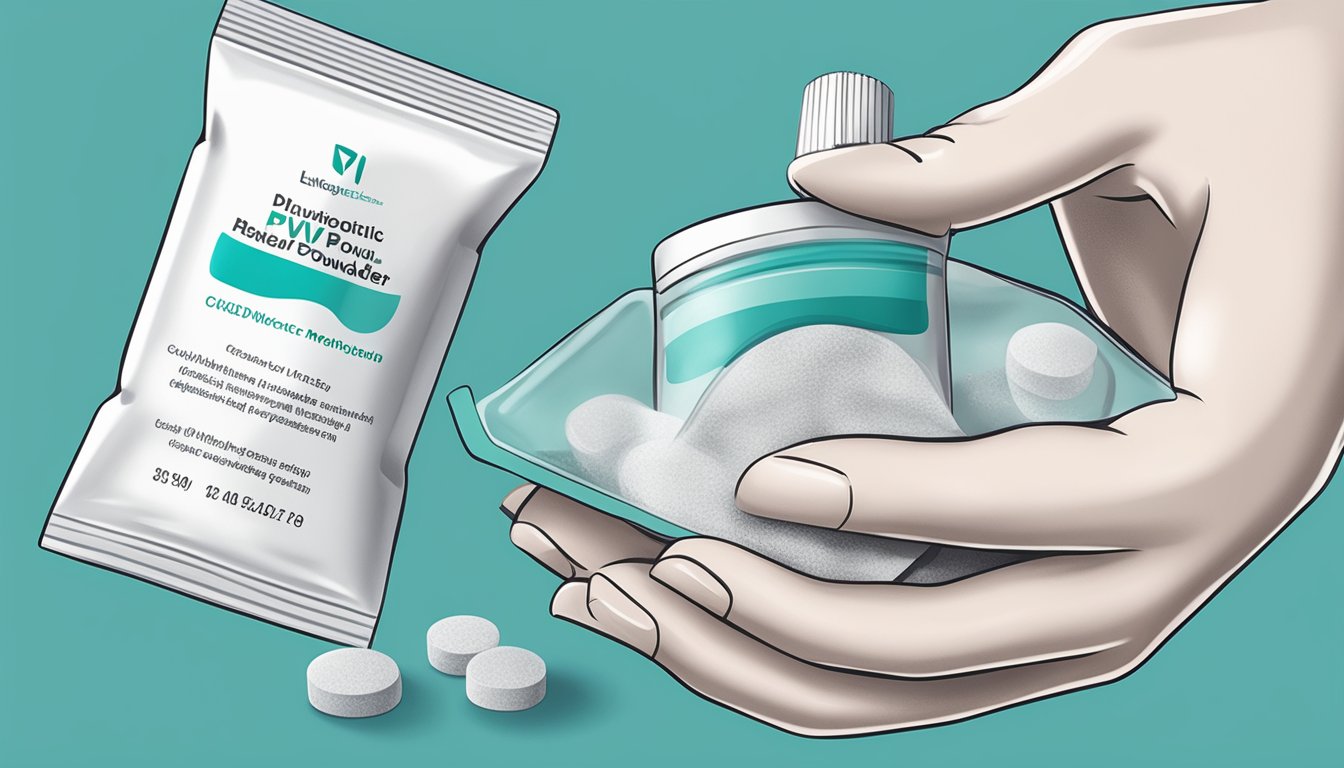PVI Powder: What It Is and How It’s Used
19/01/2024
PVI Powder is a popular brand of smokeless gunpowder used by gun enthusiasts and hunters. PVI Powder is known for its high-quality and consistency, making it a favorite among those who demand precision and accuracy from their firearms. PVI Powder is available in a range of different types, including rifle, pistol, and shotgun powders.

PVI Powder is manufactured by Powder Valley Inc., a company based in the United States that specializes in reloading supplies and equipment. The company was founded in 1984 and has since become one of the leading suppliers of reloading equipment and supplies in the country. PVI Powder is just one of the many products offered by Powder Valley Inc., which also sells ammunition, primers, bullets, reloading brass, reloading manuals, and more.
Whether you’re a seasoned hunter or a beginner gun enthusiast, PVI Powder is a reliable and consistent choice for your reloading needs. With its high-quality and consistent performance, PVI Powder is trusted by gun enthusiasts and hunters alike. So if you’re looking for a reliable and consistent smokeless gunpowder, look no further than PVI Powder.
PVI Powder Overview

Chemical Composition
PVI Powder, also known as Pre-Vulcanization Inhibitor, is a chemical compound that belongs to the family of organic chemicals known as amides. The chemical structure of PVI powder consists of a nitrogen atom bonded to two carbon atoms, which are in turn bonded to an oxygen atom and a sulfur atom. The molecular formula of PVI powder is C13H16N2S.
Physical Properties
PVI Powder is a white to light yellow crystalline powder that is soluble in acetone, benzene, toluene, ethyl acetate, hot CCl4, and hot alcohol. It is slightly soluble in gasoline and insoluble in kerosene and water. PVI powder has a density of 1.25-1.35 g/cm3 and a melting point of 90-94°C.
PVI Powder is an effective scorch inhibitor for natural rubber, synthetic rubber, and diene rubber-based compounds. It can prevent early vulcanization during processing, improving safety. PVI powder is most sensitive to sulphenamide accelerated stocks and highly unsaturated rubbers. Only very small dosages of PVI powder (e.g., 0.05-0.15 phr) can improve the scorch safety of NR based sulphenamide accelerated rubber compound by 30% without affecting the physical properties of the vulcanized rubber.
In summary, PVI Powder is an important chemical compound used in the rubber industry to improve the safety and processing of rubber compounds. Its chemical composition and physical properties make it an effective scorch inhibitor for natural, synthetic, and diene rubber-based compounds.
Production Process

Raw Material Selection
The production of PVI powder starts with the selection of high-quality raw materials. The raw materials used for the production of PVI powder include polyvinylpyrrolidone (PVP) and iodine. The PVP is selected based on its molecular weight, which is critical in determining the properties of the final product. The iodine used in the production process is also carefully selected to ensure that it meets the required purity standards.
Manufacturing Techniques
The manufacturing process of PVI powder involves several steps. The first step involves the mixing of PVP and iodine in a reactor vessel. The mixture is then heated to a specific temperature and maintained at that temperature for a specific period. During this time, the iodine dissolves in the PVP, forming a solution.
The solution is then cooled and dried to obtain the PVI powder. The drying process is critical in ensuring that the final product has the desired properties. The drying process is carried out using various techniques such as spray drying, freeze-drying, and vacuum drying.
Quality Control
Quality control is a critical aspect of the production process of PVI powder. The quality control process starts with the selection of high-quality raw materials and continues throughout the production process. The final product is tested to ensure that it meets the required purity standards.
Various tests are carried out during the production process to ensure that the product meets the required specifications. These tests include tests for moisture content, particle size, and purity. The product is also subjected to stability testing to ensure that it remains stable over time.
Overall, the production process of PVI powder involves careful selection of raw materials, precise manufacturing techniques, and rigorous quality control to ensure that the final product meets the required specifications.
Applications

PVI powder has a wide range of applications in various industries. The following are some of its most common uses.
Pharmaceutical Uses
PVI powder is used in the pharmaceutical industry as a scorch retarder in rubber stoppers and other rubber components. It helps to prevent premature vulcanization of rubber compounds, which can cause scorching and reduce the quality of the final product. PVI powder is also used as a processing aid in the production of latex gloves, condoms, and other medical devices made of natural rubber latex.
Industrial Applications
In the industrial sector, PVI powder is used as an antiscorching agent in the production of rubber products, including tires, conveyor belts, hoses, and seals. PVI powder helps to improve the processing safety of rubber compounds and prevents scorching during processing. It also improves the storage stability of rubber compounds, preventing natural vulcanization phenomena.
PVI powder is also used in the production of adhesives and sealants, where it acts as a stabilizer, preventing premature curing and improving the storage stability of the final product. Additionally, PVI powder is used in the production of wire and cable insulation, where it helps to improve the processability of the polymer and prevent scorching during processing.
Overall, PVI powder is a versatile chemical with a wide range of applications in various industries. Its ability to improve the processing safety and storage stability of rubber compounds, as well as its stabilizing properties in adhesives and sealants, make it a valuable component in the production of many products.
Regulatory Compliance
Safety Standards
PVI powder is a hazardous material that requires proper handling and storage. Regulatory compliance is crucial to ensure the safety of workers and the public. The Occupational Safety and Health Administration (OSHA) has established safety standards for handling hazardous materials. These standards include requirements for labeling, training, and personal protective equipment. Employers must ensure that their workers are trained on the proper handling and storage of PVI powder and are provided with appropriate personal protective equipment.
Environmental Impact
In addition to safety standards, PVI powder is subject to environmental regulations. The Environmental Protection Agency (EPA) has established regulations for the disposal of hazardous waste, including PVI powder. Hazardous waste must be properly labeled, stored, and disposed of in accordance with EPA regulations. Failure to comply with these regulations can result in fines and legal action.
To ensure regulatory compliance, companies should establish procedures for handling and disposing of PVI powder. These procedures should include training for workers, labeling requirements, and proper storage and disposal methods. Companies should also maintain records of their compliance with regulatory requirements.
Overall, regulatory compliance is essential for the safe handling and disposal of PVI powder. Companies must take the necessary steps to ensure the safety of their workers and the public, as well as comply with environmental regulations.
Market Insights
Demand Analysis
The protein powder market is expected to grow at a CAGR of over 7.3% between 2022 and 2032, according to Future Market Insights. The demand for protein powder is driven by the growing health consciousness among consumers, increasing awareness of the benefits of protein supplements, and the rise in the number of fitness enthusiasts. The high protein content in protein powder makes it an ideal supplement for athletes, bodybuilders, and fitness enthusiasts who require a high protein diet to build and repair muscles.
The increasing prevalence of obesity and related health conditions such as diabetes and cardiovascular diseases has also contributed to the demand for protein powder. The high protein content in protein powder helps in weight management by promoting satiety and reducing hunger pangs. Additionally, protein powder is a convenient and easy-to-use source of protein, making it a popular choice among busy individuals who have little time to prepare protein-rich meals.
Supply Chain
The supply chain for protein powder involves several key players, including manufacturers, distributors, and retailers. The raw materials used in the production of protein powder include whey, casein, soy, and pea protein. These raw materials are sourced from various regions around the world, with the largest producers of whey protein being the United States, Europe, and New Zealand.
Manufacturers of protein powder typically use a combination of these raw materials to produce a range of protein powders with varying protein content and nutritional profiles. The production process involves several stages, including blending, homogenization, and drying. The finished product is then packaged and distributed to retailers and wholesalers, who sell the product to consumers.
The protein powder market is highly competitive, with several key players dominating the market. Some of the leading manufacturers of protein powder include Glanbia plc, MusclePharm Corporation, and Optimum Nutrition. These companies have a strong presence in the market and offer a range of protein powders with varying protein content and nutritional profiles to cater to the diverse needs of consumers.
Technical Specifications
PVI (N-(cyclohexylthio) phthalimide) is a white or light-yellow crystalline powder with a melting point of 90-95°C. It is soluble in acetone, benzene, toluene, ethyl acetate, and hot carbon tetrachloride. PVI is used as a pre-vulcanization inhibitor in the rubber industry to prevent scorching during processing. It can be used in natural or synthetic rubber and can effectively improve the capacity of the vulcanizer.
The following table summarizes the technical specifications of PVI:
| Property | Specification |
|---|---|
| Appearance | White or light-yellow crystalline powder |
| Melting Point | 90-95°C |
| Ash Content | 0.5% Max |
| Heat Loss | 0.5% Max |
| Dosage | 0.5-1.5 phr |
PVI is an ideal pre-vulcanization (scorch) inhibitor for NR, IR, NR-BR blend, SBR, NR-SBR, SBR-BR blends, NBR, CR, and other diene rubber-based accelerated sulphur cured compounds. The recommended dosage of PVI ranges from 0.5 to 1.5 phr, depending on the type of rubber and the processing conditions.
In addition to preventing scorching, PVI can also improve the storage stability of rubber compounds and prevent natural vulcanization phenomena. It does not cause foam, pollution, or any other adverse effects.
Overall, PVI is a reliable and effective pre-vulcanization inhibitor that can improve the processing and storage of rubber compounds. Its technical specifications and compatibility with various types of rubber make it a popular choice in the rubber industry.
Storage and Handling
Packaging Requirements
PVI powder is typically packaged in moisture-resistant containers made of high-density polyethylene (HDPE) or polypropylene (PP) to protect it from moisture and other environmental factors. The containers should be tightly sealed to prevent moisture or other contaminants from entering.
When storing PVI powder, it is important to keep it away from heat sources and direct sunlight. It should be stored in a cool, dry place with good ventilation to prevent the buildup of gases. The storage area should be free from ignition sources, such as open flames or sparks.
Shelf Life and Stability
The shelf life of PVI powder can vary depending on the storage conditions. Under ideal conditions, PVI powder can maintain its stability for up to two years. However, exposure to heat, moisture, or other contaminants can significantly reduce its shelf life.
To ensure maximum stability and shelf life, PVI powder should be stored in its original container with the lid tightly sealed. It should not be exposed to temperatures above 40°C (104°F) or below -10°C (14°F). If the powder appears discolored or has a foul odor, it should not be used.
It is important to handle PVI powder with care to prevent accidents and ensure its stability. When handling PVI powder, it is recommended to wear protective clothing, such as gloves and safety glasses, to avoid skin or eye contact. In case of accidental contact, wash the affected area with plenty of water and seek medical attention if necessary.
Overall, proper storage and handling of PVI powder is crucial to maintain its stability and prevent accidents. By following the recommended packaging requirements and storage conditions, PVI powder can be stored safely for an extended period of time.
Potential Side Effects
Povidone-Iodine (PVI) is a commonly used antiseptic agent in medical settings due to its broad-spectrum antimicrobial activity. However, like any other medication, it can cause side effects. Some of the potential side effects of PVI powder are:
- Allergic reactions: Although rare, some people may develop an allergic reaction to PVI. Symptoms of an allergic reaction include rash, hives, itching, difficulty breathing, and swelling of the face, lips, tongue, or throat. If any of these symptoms occur, the use of PVI should be stopped immediately, and medical attention should be sought.
- Irritation and burning: PVI can cause skin and mucous membrane irritation, especially when used in high concentrations or for prolonged periods. In some cases, it can cause chemical burns, which can be painful and take time to heal. Patients should be advised to report any discomfort or burning sensation immediately.
- Thyroid dysfunction: PVI can affect thyroid function, especially when used for extended periods or when applied to large areas of the body. This is because iodine is an essential component of thyroid hormones, and excess iodine can interfere with thyroid function. Patients with pre-existing thyroid problems should be monitored closely.
- Staining: PVI can stain clothing, skin, and other surfaces. The stains are usually brown or yellow and may be difficult to remove. Patients should be advised to avoid contact with clothing or other items that can be stained.
Overall, PVI is a safe and effective antiseptic agent when used as directed. However, patients should be aware of the potential side effects and report any adverse reactions to their healthcare provider.
Advancements and Research
Pulmonary vein isolation (PVI) is a safe and effective treatment for early-stage persistent atrial fibrillation (PersAF). Recent research has shown that continued antiarrhythmic drug treatment on top of PVI does not improve clinical outcomes for patients with PersAF [1]. In fact, the POWDER-AF2 study found that PVI alone is sufficient for treating early-stage PersAF [1].
Dry powder formulations and inhaler devices are the primary technologies used to form sprays for pulmonary drug delivery [2]. These technologies have been shown to enhance the bioavailability of natural extracts for nutritional and therapeutic purposes [3]. For example, inhaling andrographolide (AG) dry powder has been found to be effective in reducing pro-inflammatory cytokines, regulating the immune response, and downregulating inflammation [3].
Polyvinylpyrrolidone (PVP) is a synthetic polymer that shows a complex affinity for both hydrophilic and hydrophobic substances. PVP has been used as an excipient in the pharmaceutical industry to improve the solubility and bioavailability of poorly soluble drugs [4]. PVP is nontoxic, non-ionic, inert, temperature-resistant, pH-stable, and biocompatible, making it an ideal excipient for various drug formulations.
In conclusion, advancements in PVI and dry powder formulations have led to safer and more effective treatments for various medical conditions. PVP has also proven to be a useful excipient in the pharmaceutical industry for improving drug solubility and bioavailability. Further research in these areas will undoubtedly lead to even more advancements and improvements in medical treatments.
References:
- No Effect of Continued Antiarrhythmic Drug Treatment on Top of Pulmonary Vein Isolation in Early Persistent Atrial Fibrillation: The POWDER-AF2 Study
- Dry Powder Formulation and Inhaler Device
- Enhancing Bioavailability of Natural Extracts for Nutritional and Therapeutic Purposes
- Pharmaceutical Assessment of Polyvinylpyrrolidone (PVP): As Excipient in Drug Formulation
Global Distribution and Trade
PVI powder is a widely used product that is distributed and traded all over the world. The demand for PVI powder has been increasing steadily over the years due to its various applications in different industries. The following paragraphs will discuss the global distribution and trade of PVI powder.
Distribution
PVI powder is distributed globally through various channels such as direct sales, distributors, and agents. The majority of PVI powder manufacturers have their own distribution networks that cover different regions of the world. These manufacturers also work with local distributors and agents to reach customers in remote locations.
PVI powder is available in different grades and packaging sizes to cater to the specific needs of different industries. The powder is packed in bags, drums, or bulk containers depending on the quantity required by the customer. The packaging is designed to ensure the safe handling and transportation of the product.
Trade
PVI powder is traded globally as a commodity. The product is bought and sold in different currencies depending on the location of the buyer and seller. The price of PVI powder is determined by various factors such as supply and demand, production costs, and market trends.
PVI powder is traded through various channels such as online marketplaces, trade shows, and auctions. The product is also traded through intermediaries such as brokers and traders who facilitate the buying and selling of the product between buyers and sellers.
In conclusion, PVI powder is a globally traded product that is distributed through various channels. The demand for the product has been increasing due to its various applications in different industries. The availability of the product in different grades and packaging sizes ensures that customers can find a product that meets their specific needs.
Frequently Asked Questions
What is the cost range for pre-vulcanization inhibitor (PVI) powder?
The cost of PVI powder can vary depending on the manufacturer, quantity, and purity of the product. Generally, PVI powder is priced at a premium compared to other rubber compounding ingredients due to its effectiveness in controlling vulcanization. The cost range for PVI powder can vary from $10 to $50 per kilogram.
What are the primary applications of pre-vulcanization inhibitors in the rubber industry?
Pre-vulcanization inhibitors, or PVI, are widely used in the rubber industry to control the vulcanization process. PVI is added to rubber compounds to prevent premature cross-linking of the rubber molecules during processing, which can result in a reduction in the quality of the final product. PVI is commonly used in the production of tires, hoses, belts, and other rubber products.
What is the full chemical name of PVI used in rubber manufacturing?
The full chemical name of PVI used in rubber manufacturing is N-cyclohexylthio phthalimide. It is a white or light yellow powder that is soluble in acetone, benzene, and carbon tetrachloride.
How does PVI function as a vulcanization inhibitor in the rubber compounding process?
PVI functions as a vulcanization inhibitor by reacting with sulfur, which is used as a cross-linking agent in rubber compounding. PVI forms a complex with the sulfur atoms, preventing them from reacting with the rubber molecules and cross-linking prematurely. This allows the rubber compound to be processed without premature cross-linking, resulting in a higher quality final product.
What are the handling and storage considerations for PVI powder?
PVI powder should be handled with care to avoid skin contact, inhalation, or ingestion. It should be stored in a cool, dry, and well-ventilated area away from sources of ignition and incompatible materials. PVI powder should be stored in tightly closed containers to prevent moisture absorption and contamination.
Are there any common alternatives to PVI for controlling vulcanization in rubber production?
Yes, there are several alternatives to PVI for controlling vulcanization in rubber production. Some of the commonly used alternatives include thiourea derivatives, dithiocarbamates, and mercaptobenzothiazole derivatives. However, PVI remains the most widely used vulcanization inhibitor due to its effectiveness and compatibility with a wide range of rubber compounds.




